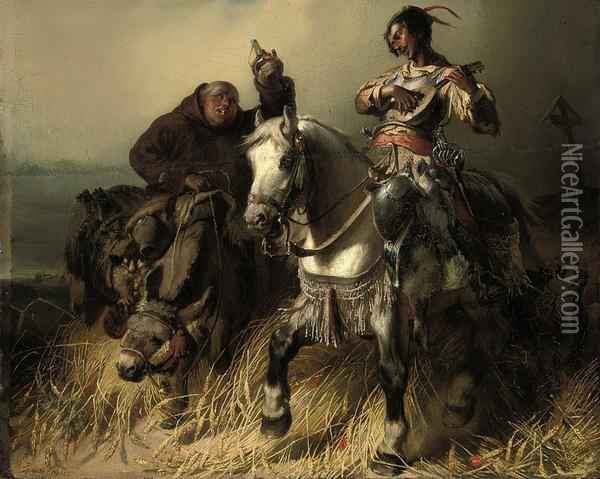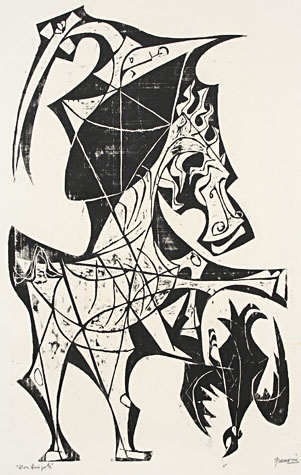…Caught between a heroic past and a future of disillusion. The Don Quixote of Miguel de Cervantes…
For of course Don Quixote is Cervantes. This is well pointed out. One of the sources of Don Quixote’s power to move us comes from his being a projection of a discarded part of Cervantes himself:that is to say, of the noble intentions and failure of his life. It is for this reason that the irony in this most ironical of books has often the deep and searching quality of self-irony.
But it is also a delicate self-irony. That is why it is so attractive, why it makes so great a book. When a man makes steppingstones of his dead selves, he is very likely to jump upon them to some tune. But Cervantes did not jump. If he is disillusioned, there is nothing vindictive or cynical about his disillusion. How could there be, when half of his own life had been invested in those illusions which he now found himself, with all Spain, forced to mock? A generation would come which had made no such investment and which could afford to be severe against the fantasies of the past. But Cervantes could not, for he had a foot in either world. And so he wrote essentially not for the future, but for his own generation, the generation of he disillusioned, which could yet regret its illusions: for they were his own.
ADDENDUM:
(see link at end)…Keep in mind that Quixote himself is a reader-turned-participant in the extremest sense. He has read all the books of chivalry he can find and has decided to take up the sword himself to do great deeds in the name of his Lady Dulcinea del Toboso. And we are, as Cervantes points out on many occasions, reading a book about his exploits. This makes Quixote the ultimate reader participant.
It’s worth noting too, that often, it is Quixote who causes the interruption in the telling of a story, be it on purpose or on accident. In the third example, that of “The Tale of Ill-Advised Curiosity,” the characters reading the tale are Cardenio, Dorotea, the curate and the barber. Cardenio and Dorotea are caught up in a love tangle (not triangle) somewhat similar to that in “The Tale of Ill-Advised Curiosity,” and all four of them have created a story in which Dorotea plays Princess Micomicona, who needs Quixote to slay a giant for her, in order to get Quixote home. They, too, have become participants in Quixote’s story, and it is only fitting that he should interrupt their entertainment to continue the story they’ve created.
Although Cervantes was ultimately parodying Spain’s complete obsession with chivalrous novels, I also read Don Quixote as a parody of the extreme inaction and passivity of those same readers. I doubt Cervantes wants us to put on armor and take up swords and wander around the country slaying wine skins, but interact with the books you read. Think about them critically. Talk about them. Write about them.Read More:http://narrativeintheblog.wordpress.com/2011/12/26/the-disruptive-narrative-in-don-quixote/







 COMMENTS
COMMENTS